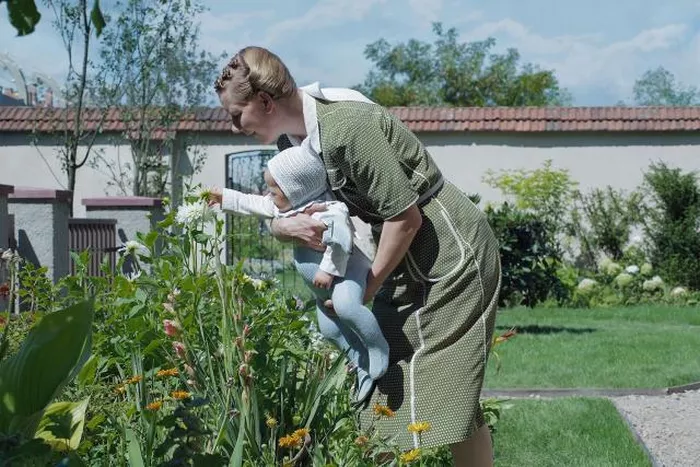Holocaust films have explored the depths of human suffering and the brutality of the Nazi regime from various angles. However, Jonathan Glazer’s “The Zone of Interest” ventures into uncharted territory, offering a profoundly disturbing perspective on the Holocaust. Released on December 8th, this film delves into the lives of Commandant Rudolf Höss of Auschwitz, his wife Hedwig, and their family, all the while presenting the banality of their evil in a chillingly realistic manner. In this article, we will explore how “The Zone of Interest” redefines Holocaust cinema and forces viewers to confront the disturbing ordinariness of unimaginable atrocities.
The Banality of Evil
Glazer’s film stands apart from other Holocaust portrayals as it refrains from showcasing the horrors of Auschwitz directly. Instead, it offers glimpses of the inferno through the windows of the Höss family’s domestic bliss, such as the eerie backdrop of the crematorium’s fiery glow. This intentional omission contrasts starkly with conventional depictions of the era, forcing viewers to confront the unsettling normalcy in the lives of perpetrators.
Through the lens of naturalistic cinematography, Glazer presents an anthropological study of the Höss family, effectively demonstrating that evil can reside in seemingly ordinary individuals. Rudolf Höss, portrayed by Christian Friedel, is not a caricatured Nazi villain but a family man who prioritizes his job’s efficiency over human lives. Hedwig, played by Sandra Hüller, is equally chilling in her complicity as she goes about her daily routines amidst mass murder. This portrayal underscores the film’s core theme—the banality of evil.
The Unsettling Atmosphere
One of the film’s most powerful elements is its ability to immerse viewers in an atmosphere of discomfort. Mica Levi’s haunting score plays a pivotal role in accomplishing this. The atonal dissonance and choral arrangements that resemble strangled screams reinforce the sense of horror. While the visuals alone are unsettling, the auditory experience takes the discomfort to another level. Levi’s score ensures that viewers sit with their unease throughout the film, a visceral reminder of the horrors unfolding nearby.
Experimental Moments
While “The Zone of Interest” excels in its portrayal of the banality of evil, it does have moments of experimentation that may polarize audiences. Some scenes hold onto a blank screen for extended periods, and decontextualized night vision sequences disrupt the narrative flow. These avant-garde choices, although jarring, contribute to the film’s overall sense of disquiet. They invite viewers to question the boundaries of traditional storytelling in Holocaust cinema and emphasize the surreal nature of the situation.
Conclusion
In conclusion, Jonathan Glazer’s “The Zone of Interest” offers a chilling and thought-provoking perspective on the Holocaust, redefining the genre. By focusing on the banality of evil within the Höss family, the film forces us to confront our own complicity and the capacity for great evil in ordinary circumstances. While its experimental moments may challenge some viewers, the overall impact is a profound and haunting cinematic experience. “The Zone of Interest” is a stark reminder of the horrors of history that we must never forget, even if it is an experience that many may find difficult to endure a second time.

